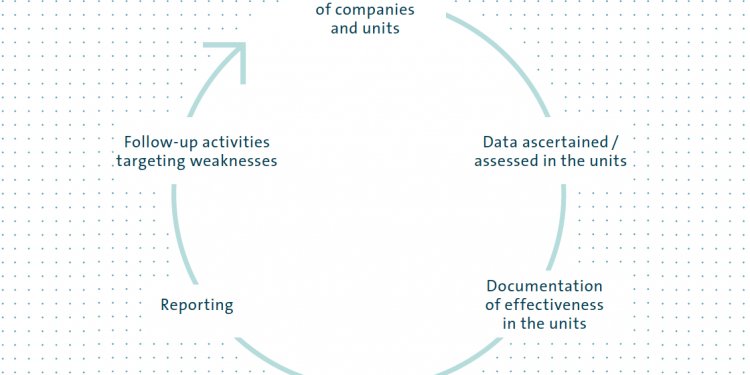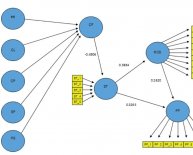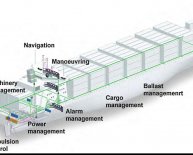
Meaning of Management control Systems
 Photo by: endostock
Photo by: endostock
Management control describes the means by which the actions of individuals or groups within an organization are constrained to perform certain actions while avoiding other actions in an effort to achieve organizational goals. Management control falls into two broad categories—regulative and normative controls—but within these categories are several types.
Table 1
Types of Control
| Regulative Controls | Normative Controls |
| Bureaucratic Controls | Team Norms |
| Financial Controls | Organizational Cultural Norms |
| Quality Controls |
The following section addresses regulative controls including bureaucratic controls, financial controls, and quality controls. The second section addresses normative controls including team norms and organization cultural norms.
REGULATIVE CONTROLS
Regulative controls stem from standing policies and standard operating procedures, leading some to criticize regulative controls as outdated and counter-productive. As organizations have become more flexible in recent years by flattening organizational hierarchies, expanding organizational boundaries to include suppliers in inventory management and customers in new product development, forging cooperative alliances with competitors, and developing virtual organizations in which employees are geographically dispersed and may meet only a few time each year, critics point out that regulative controls may prevent rather promote goal attainment.
There is some truth to this. Customer service representatives at Holiday Inn are limited in the extent to which they can correct mistakes involving guests. They can move guests to a different room if there is excessive noise in the room next to the guest's room. In some instances, guests may get a gift certificate for an additional night at another Holiday Inn if they have had a particularly bad experience. In contrast, customer service representatives at Tokyo's Marriott Inn have the latitude to take up to $500 off a customer's bill to solve complaints.
The actions of customer service representatives at both Holiday Inn and Marriott Inn must follow policies and procedures, yet those at Marriott are likely to feel less constrained and more empowered by Marriott's policies and procedures compared to Holiday Inn customer service representatives. The key in terms of management control is matching regulative controls such as policies and procedures with organizational goals such as customer satisfaction. Each of the three types of regulative controls discussed in the next few paragraphs has the potential to align or misalign organizational goals with regulative controls. The challenge for managers is striking the right balance between too much control and too little.
BUREAUCRATIC CONTROLS
Bureaucratic controls stem from lines of authority and this authority comes with one's position in the organizational hierarchy. The higher up the chain of command, the more an individual will have authority to dictate policies and procedures. Bureaucratic controls have gotten a bad name and often rightfully so. Organizations placing too much reliance on chain of command authority relationships inhibit flexibility to deal with unexpected events. However, there are ways managers can build flexibility into policies and procedures that make bureaucracies as flexible and able to quickly respond to customer problems as any other form of organizational control.
Consider how hospitals, for example, are structured along hierarchical lines of authority. The Board
Table 2
Definition and Examples of Regulative Controls
| Type of Regulative Control | Definition | Example |
| Policies and operating procedures | Employee handbook | |
| Financial Controls | Key financial targets | Return on investment |
| Acceptable levels of product or process variation | Defects per million |
of Directors is at the top, followed by the CEO and then the Medical Director. Below these top executives are vice presidents with responsibility for overseeing various hospital functions such as human resources, medical records, surgery, and intensive care units. The chain of command in hospitals is clear; a nurse, for example, would not dare increase the dosage of a heart medication to a patient in an intensive care unit without a physician's order. Clearly, this has the potential to slow reaction times—physicians sometimes spread their time across hospital rounds for two or three hospitals and also their individual office practice. Yet, it is the nurses and other direct care providers who have the most contact with patients and are in the best position to rapidly respond to changes in a patient's condition.
The question bureaucratic controls must address is: How can the chain of command be preserved while also building flexibility and quick response times into the system? One way is through standard operating procedures that delegate responsibility downward. Some hospital respiratory therapy departments, for example, have developed standard operating procedures (in health care terms, therapist-driven protocols or TDPs) with input from physicians.
TDPs usually have branching logic structures requiring therapists to perform specific tests prior to certain patient interventions to build safety into the protocol. Once physicians approve a set of TDPs, therapists have the autonomy to make decisions concerning patient care without further physicians' orders as long as these decisions stay within the boundaries of the TDP. Patients need not wait for a physician to make the next set of rounds or patient visits, write a new set of orders, enter the orders on the hospitals intranet, and wait for the manager of respiratory therapy to schedule a therapist to perform the intervention. Instead, therapists can respond immediately because protocols are established that build in flexibility and fast response along with safety checks to limit mistakes.
Bureaucratic control is thus not synonymous with rigidity. Unfortunately, organizations have built rigidity into many bureaucratic systems, but this need not be the case. It is entirely possible for creative managers to develop flexible, quick-response bureaucracies.
FINANCIAL CONTROLS
Financial controls include key financial targets for which managers are held accountable. These types of controls are common among firms that are organized as multiple strategic business units (SBUs). SBUs are product, service, or geographic lines having managers who are responsible for the SBU's profits and losses. These managers are held responsible to upper management to achieve financial targets that contribute to the overall profitability of the corporation.
Managers who are not SBU executives often have financial responsibility as well. Individual department heads are typically responsible for keeping expenses within budgeted guidelines. These managers, however, tend to have less overall responsibility for financial profitability targets than SBU managers.
In either case, financial controls place constraints on spending. For SBU managers, increased spending must be justified by increased revenues. For departmental managers, staying within budget is typically one key measure of periodic performance reviews. The role of financial controls, then, is to increase overall profitability as well as to keep costs in line. To determine which costs are reasonable, some firms will benchmark other firms in the same industry. Such benchmarking, while not always an "apples-to-apples" comparison, provides at least some evidence to determine whether costs are in line with industry averages.

















